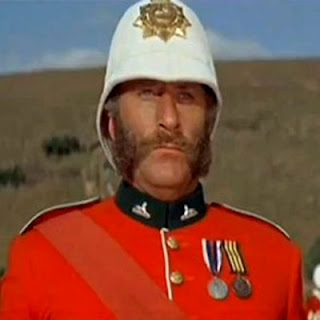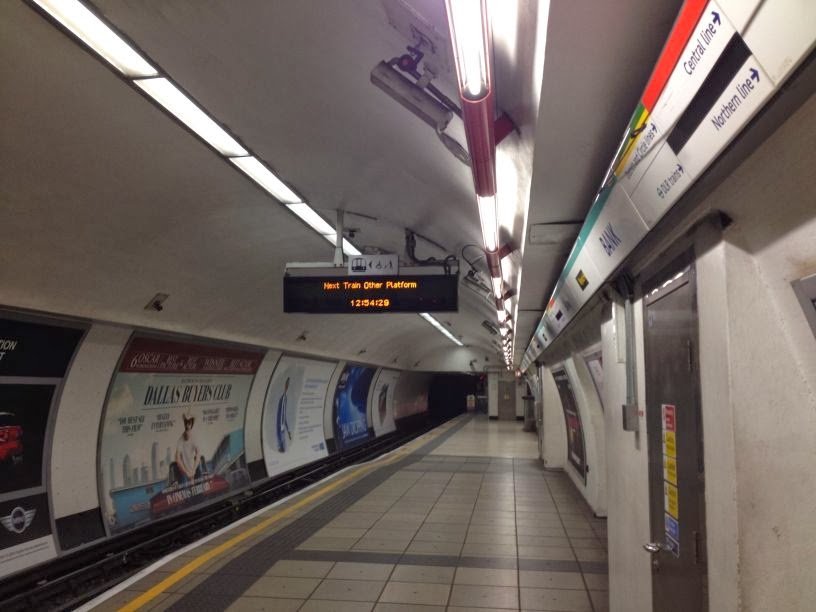No?
Well that’s probably not that unsurprising as I think at its very peak it reached a grand total of about 5 whole readers, but never the less, I hope this wide reaching readership is as delighted as I am to resurrect this particular pointless piece of internet drivel.
Also, if you also remember the point of the blog, it was to describe some of the interesting features of London that one simply can’t help tripping over whilst popping out for nothing more than an hour’s lunch break. Since my place of work has moved to Wimbledon, interesting things have been a little sparser on the ground compared to when I worked in the City, but that really just means I have to be more imaginative and generally stop hanging round train stations during lunch.
During Christmas 2014 I accidentally caught the annual presentation of the classic 1964 film, Zulu. In between watching Stanley Baker and Michael Caine once more push back the thousands of Zulu warriors, I started browsing and linking from one internet article to another internet article, researching the real facts behind the battle of Rorke’s Drift and the real people behind the film’s characters.
Nigel Green as CSgt Frank Bourne
For anyone who has seen the film, maybe like me, you were struck by the character of Colour Sergeant Frank Bourne, played in the film by the actor Nigel Green. In the film, Green is made up to appear as a whiskery army veteran and plays the part of CSgt Bourne in a very “now then boys, do you tunics up, officer on parade” Sergeant Major fashion. Something we would see Windsor Davis similarly do in the sitcom Ain’t Half Hot Mum around 10 years later.
It turns out that in reality at the time of the battle, CSgt Frank Bourne was a young senior NCO aged only 24. Two years earlier, at the age of 22 he had been promoted to Colour Sergeant becoming the youngest man in the entire British Army to hold this rank and had earned himself the nickname of “The Kid”.
Frank Bourne later in his military career. Here wearing the uniform of a Captain.
Also, unlike the actor Green, who was often cast in roles to suit his strapping size, Bourne was a smallish man, 5’ 6” tall, so completely different from the way the film’s producers had decided to depict the role.
In a similar fashion of turning the facts on their heads, Lieutenants Chard and Bromhead (played by Baker and Caine) were 31 and 33 years old respectively at the time of the battle, so perhaps not quite the young fresh-faced whippersnappers arguing over who had been commissioned first, that the film shows them to be.
The other real-life difference between these three main characters was that both Chard and Bromhead had died less than 20 years after the battle. Frank Bourne on the other hand out-survived every other soldier present at the battle and reached the grand old age of 91 when he died on VE Day in 1945.
The other fact that leapt to my eyes as I read about this colourful character was that Bourne is buried in Beckenham Cemetery and Crematorium and anyone who has previously dipped their toes into any of my other pointless blogs (Playing Monopoly, Oranges & Lemons, Flying the Flag) might remember that star of stage, screen and his local Nandos, Spikey Haired Ed, lives in Beckenham. I won’t publish his exact address as I’m sure his neighbours wouldn’t appreciate hordes of autograph hunting teenage girls queuing up around his flat, but this seemed like far too good an opportunity to arrange a things you see “after work” along with a catch up with Ed. The fact that it took us nearly 18 months to get around to organising something is perhaps another story.
Wimbledon Station in all its sunny glory.
One of the best things about working in Wimbledon is that the transport links are excellent and it’s possible to get a London Tramlink tram directly from Wimbledon to Beckenham Junction, which although may not be the fastest way to get there, it’s certainly very easy. So at just gone knocking off time, TL 2562 (which is one of only 6 Variobahn trams on the network (the other 24 being CR4000’s)) had one additional passenger for the long winding route to Beckenham.
Variobahn 2562 at Wimbledon.
Well I say Beckenham, in order to visit the cemetery I would have to change at Arena Tram Stop and then change onto the Beckenham branch for just one stop to Harrington Road.
Arena Tram Stop.
At Arena, look out for this woman with a strange Toll Gate sign coming out the top of her head.
Beckenham Crematorium and Cemetery lies just over the track from my alighting point on Harrington Road and although the iron gates were firmly locked for any vehicular access, the pedestrian gate was wide open. The cemetery isn’t a huge area but the amount of graves contained within is very numerous. Although there are tarmacked and non-tarmacked paths between the various plots, the amount and condition of some of the older graves makes it very hard to try to navigate an easy route to any particular grave you’re trying to locate.
Beckenham Crematorium & Cemetery.
I had managed to find a rough sketch diagram as to where Bourne’s grave was located, but the inaccuracy of the map and my rusty boy-scout navigational skills saw us take many a wrong turning on the stumbling route between the stone angels and stone crosses.
There are a few notable graves in Beckenham Crematorium and Cemetery and one of these is of Thomas Crapper, who, and let’s be very clear here, DID NOT invent the flush toilet, but did do lots of important work in the sanitary business and did develop other inventions such as the ball cock.
Quite by accident I came across Crapper’s grave which is a smart low white marble affair, which was at least something of interest as I tried yet another dead-end of the many paths leading around the other grave stones and although I was enjoying myself, as much as one can do when tramping around a cemetery, it was a tad frustrating not being able to locate Bourne’s own plot.
The final resting place of Thomas Crapper.
I guess I have something of a love-hate relationship with graveyards and cemeteries. On the one hand I like them for being interesting and historical places but on the other hand, it would be the last place I would want to come and remember my own loved ones, or indeed I would want loved ones to come and remember me. I guess it’s each unto their own, but looking at some of the considerable sized modern graves that were there, I guess there is no lack of interest to keep this particular fashion of remembrance in place, or indeed the money that is no doubt necessary to pay for some of the more fantastically appointed stones.
I was by now on my very last chance I’d given myself to locate the grave and was bumbling up another path when I spied a stone dedicated to a certain William John George Evans VC, and I knew from some of the reading I’d done beforehand that Bourne’s grave was located near to this other military hero. I’ll let others read up about Evans and what he did to earn his VC, but I’ll just say that I’m pleased to see his stone is looking rather better kept currently than the picture on his Wikipedia article shows.
William John George Evans VC
Bourne’s gravestone faces opposite Evans’s and is a modest, compared to some in the cemetery, stone affair with a bed of green coloured stone chippings in front. There were no fresh flowers on the grave but there again, there didn’t seem to be on any of the graves and I hadn’t brought any, so not making any judgements here. The grave is also home to Eliza Bourne, Frank’s wife and Constance Bourne, who by a calculation of the dates, may well have been his daughter.
Frank Bourne OBE DCM
Again I’ll leave it for others to do their own research in the rest of Bourne’s military career and some of the links I’ve provided at the bottom of this page will help. I’d really only be rehashing these if I reported it all here and what I found more interesting was the differences between fact and Hollywood fiction.
So with my mission accomplished I made my way to the north cemetery exit to re-join the tram route at Birbeck Tram Stop. Just as I was walking down the path leading to the exit, I spotted a large wire sided waste bin, which was almost completely empty apart from a bright blue ball-cock. What this was doing there or how it became to be there is of course a mystery…….but I’m sure Thomas Crapper appreciated the gesture!
Links



















































